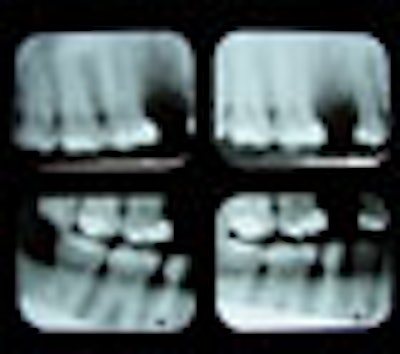
Fearing they may become the subject of malpractice litigation or licensing violations, some Oregon dentists are reportedly refusing to treat patients who refuse to be x-rayed before routine cleaning appointments.
The February 2012 issue of the Oregon Board of Dentistry's professional newsletter included the following statement on the standard of care regarding dental radiographs:
The Standard of Care in Oregon requires that current radiographs are available prior to providing treatment to a patient. If a patient without a medical justification refuses to allow radiographs to be taken, even with the offer to sign a waiver, then providing treatment to that patient would violate the Standard of Care in Oregon.
Since then, according to an Associated Press story, dentists have been "erring on the side of caution" to protect themselves from malpractice claims and avoid putting their licenses in jeopardy.
Some dentists say the description provided by the dental board is confusing with regard to what constitutes "current," the AP reported.
The rule of thumb is spelled out in guidelines from the ADA and the U.S. Food and Drug Administration (FDA), according to Patrick Braatz, executive director of the Oregon Board of Dentistry.
Those guidelines call for posterior bitewing exams every 24-36 months in established adult patients with no caries and no increased risk of developing caries and every 18-36 months for adolescents with permanent dentition (Journal of the American Dental Association, September 2006, Vol. 137:9, pp. 1,304-1,312). For recall adult patients with caries or at increased risk of developing caries, the exams are recommended at 6- to 18-month intervals.
"A patient refusing to have x-rays taken is not something that a dentist can agree to as it violates the standard of care," Braatz told DrBicuspid.com in an email. "X-rays are a diagnostic tool, and based on the condition of a patient's oral health and the guidelines from the ADA and the FDA and what is taught in dental school is what is considered the standard of care for dentists."
The board receives calls every week about this issue, Braatz added.
"People are being told that it is a law, so we wanted to clarify that it is not a law or rule but the standard of care," he said.
The ADA/FDA guidelines also say there is little evidence to support use of dental x-rays to search for problems in asymptomatic patients, and that dentists should not prescribe routine dental radiographs at present intervals.
"Instead, they should prescribe radiographs after an evaluation of the patient's needs that includes a health history review, a clinical dental history assessment, a clinical examination and an evaluation of susceptibility to dental diseases," wrote the ADA Council on Scientific Affairs.
In addition, because every precaution should be taken to minimize radiation exposure, the ADA and FDA recommend that protective thyroid collars and aprons be used whenever possible.
"Dentists should weight the benefits of dental radiographs against the consequences of increasing a patient's exposure to radiation and implement appropriate radiation control procedures," the ADA Council on Scientific Affairs concluded.



















